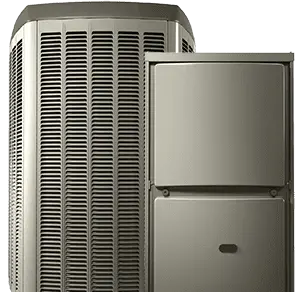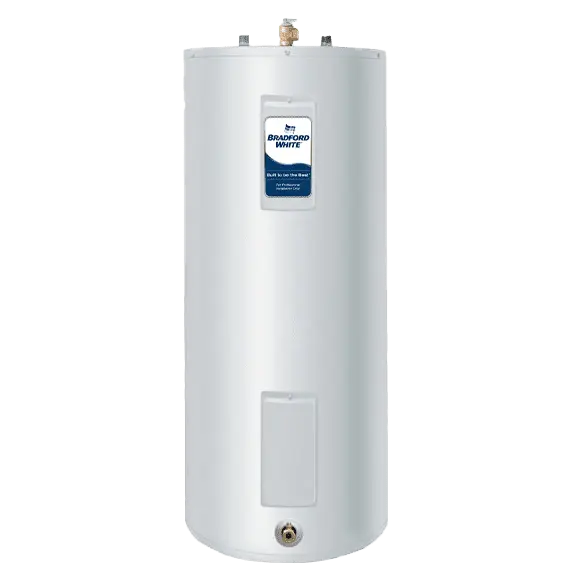Hybrid System Strategy for Deep Cold (GTA)

What a “hybrid” really is, and why it fits Ontario
A hybrid (dual-fuel) setup pairs an air-source heat pump with a gas furnace. Your controller decides which runs based on outdoor temperature and/or cost logic. Cold-climate heat pumps are specified for low-temperature performance (Ontario program criterion: COP ≥ 1.8 at −15 °C); your furnace provides dependable, high-output heat during the coldest hours. That pairing matches Ontario’s winter pattern: many hours are moderate enough for heat-pump efficiency, with intermittent deep-cold periods better handled by a furnace.
Two switch concepts you’ll hear about:
- Thermal switchover point: a temperature where the heat pump still heats, but comfort/efficiency begins to drop, so the furnace becomes a better comfort choice.
- Economic balance point: the temperature at which, given current electricity and gas prices, it costs less per unit of heat to run one system over the other. This can be automated so you’re always using the lower-cost option.
Deep-cold reliability: what to expect from a cold-climate heat pump
Cold-climate ASHPs are rated for low-temperature performance (Ontario’s ccASHP criterion measures COP at −15 °C); many models continue to operate below −15 °C with reduced capacity. Confirm with the model’s low-ambient data. In a well-designed hybrid system, the heat pump operates efficiently for most winter hours; the furnace takes over during the coldest weather or when it’s more economical to do so. In other words, you’re not choosing one system over the other; you’re choosing the right one at the right time. Ask your advisor to confirm capacity retention and minimum operating temperature from the manufacturer’s data for your exact model.
How Ontario rates shape your balance point
Your best hand-off temperature is not one-size-fits-all; it depends on today’s energy prices and your equipment:
- Electricity: Ontario offers TOU and Ultra-Low Overnight (ULO) plans with distinct price periods; on weekends and statutory holidays, the lowest TOU/ULO prices apply all day. Off-peak/overnight windows often favour running the heat pump longer.
- Current TOU prices (effective Nov 1, 2025): Off-Peak 9.8 ¢/kWh, Mid-Peak 15.7 ¢/kWh, On-Peak 20.3 ¢/kWh (delivery/fees/taxes extra).
- Natural gas: Enbridge publishes residential rate components with OEB-approved updates; use your current local rates to determine when the furnace becomes the economical choice.
AtlasCare configures hybrid controls to follow your economic balance point using current local rate structures plus your system’s performance data, so your home automatically leans on the lower-cost source without sacrificing comfort.
A quick illustration (for concept only)
Illustration (concept only): if your heat pump delivers a COP ≈ 2 at −5 °C during off-peak/overnight periods, the controller can favour the heat pump; when on-peak prices and/or lower outdoor temperatures shift the cost per unit of heat, the controller hands off to the furnace. Use current OEB TOU/ULO prices and Enbridge rate components for the comparison (delivery/fees/taxes apply).
Your exact thresholds are house-, equipment-, and rate-dependent; we calculate them during your assessment and can re-tune as prices update.
Seasonal note: Because the OEB and Enbridge adjust prices periodically, your ideal balance point can shift slightly season to season. We can review and fine-tune it during annual maintenance.
A practical hand-off plan for deep cold
- Normal winter days: Let the heat pump carry the load for steady, efficient comfort.
- Approaching the balance point: As temperatures fall toward your tuned threshold, enable automatic switchover so the furnace seamlessly takes the lead.
- During cold snaps: Rely on the furnace for robust output and rapid recovery; the heat pump can pause or provide shoulder support depending on the configuration.
- After the cold snap: Resume heat-pump primary operation to keep costs down without sacrificing comfort.
Note: The exact temperature set-point should be personalized after a site visit (home envelope, duct design, heat-pump model data, furnace AFUE, and your electricity/gas plan).
Comfort, safety, and upkeep tips that pay off
- Program for price periods: Use smart scheduling to run the heat pump during lower-cost TOU/ULO hours. (Bonus: on Ontario statutory holidays, the lowest TOU/ULO prices apply all day, another good time to favour heat-pump operation.)
- Protect airflow: Keep returns clear, replace filters on schedule (typically every 1–3 months, depending on the system and home), and ensure the outdoor heat pump unit is free of snow/ice around the coil and fan.
- Annual maintenance: NRCan recommends professional yearly maintenance for heat pumps and annual inspections for gas systems to maintain safety and performance. AtlasCare offers Maintenance Plans with an annual tune-up and priority service.
- Back-up readiness: Verify that furnace staging and the switchover logic trigger at your set threshold before the first hard freeze.
When to call AtlasCare
If you’re considering a hybrid upgrade, have a newer heat pump with an older furnace, or want your hand-off recalibrated for this winter’s prices, we’ll assess your home, explain options clearly, and set up a control strategy that aligns with your comfort and budget goals. We install and service heat pumps and gas furnaces across the GTA and can configure controls to track your preferred comfort/cost strategy.
FAQs
Will my heat pump still heat at very low temperatures?
Many cold-climate models continue operating well below −15 °C, but with reduced capacity. A hybrid setup ensures your furnace handles the coldest hours, no comfort compromise.
What’s the “best” balance point for the GTA?
There isn’t a universal number. We calculate yours from your model’s low-temperature performance data and current OEB/Enbridge prices, then program the controller accordingly.
Can a hybrid system lower my winter bills?
It can, especially when you shift more heating to off-peak/overnight electricity on ULO/TOU plans, but results depend on your rates, home, and equipment. We model it during your quote.

